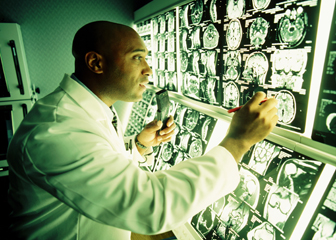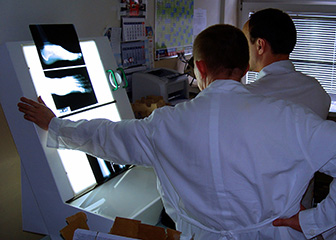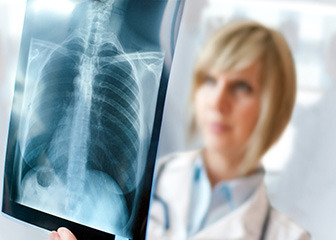How to Become a Radiologic Technologist About this section

Radiologic technologists must follow exact instructions to get the images needed to diagnose and treat the patient.
An associate’s degree is the most common educational path for radiologic technologists. Technologists must be licensed or certified in most states; requirements vary by state.
Education
There are formal training programs in radiography that lead to a certificate, an associate’s degree, or a bachelor’s degree. Associate’s degree programs are the most common. Certificate programs typically last 6 to 12 months. Typical programs include both classroom training and clinical training. Coursework includes anatomy, pathology, patient care, radiation physics and protection, and image evaluation.
The Joint Review Committee on Education in Radiologic Technology (JRCERT) accredits educational and training programs in radiography. Completing an accredited program is required for licensure in some states.
High school students who are interested in radiologic technology should take courses that focus on science and math. Suggested courses include anatomy, biology, chemistry, physiology, mathematics, and physics.
Licenses and Certification
Radiologic technologists must be licensed or certified in most states; requirements vary by state. To be licensed in most states, radiologic technologists must have graduated from an accredited program and must pass a certification exam from the state or from The American Registry of Radiologic Technologist (ARRT). For specific state requirements, contact your state’s health board. To keep their certification, radiologic technologists must meet continuing education requirements.
Important Qualities
Detail oriented. Radiologic technologists must follow exact instructions to get the images needed to diagnose and treat the patient.
Interpersonal skills. Radiologic technologists must work closely with patients. Patients may be in extreme pain or mental stress and the technologist must get cooperation from the patient to make usable images.
Science and mathematical skills. Radiologic technologists must understand anatomy, physiology, and other sciences. They may also need to mix the right dose of chemicals used in imaging procedures.
Stamina. Radiologic technologists often work on their feet for long periods and must be able to lift and move patients who need assistance.
Technical skills. Radiologic technologists must understand how to operate complex machinery.








